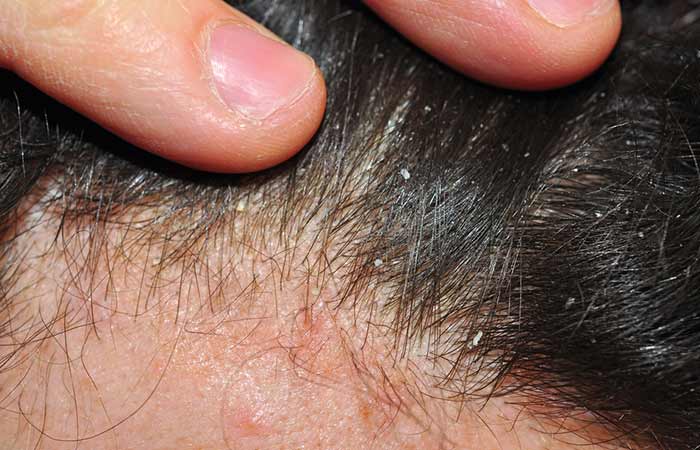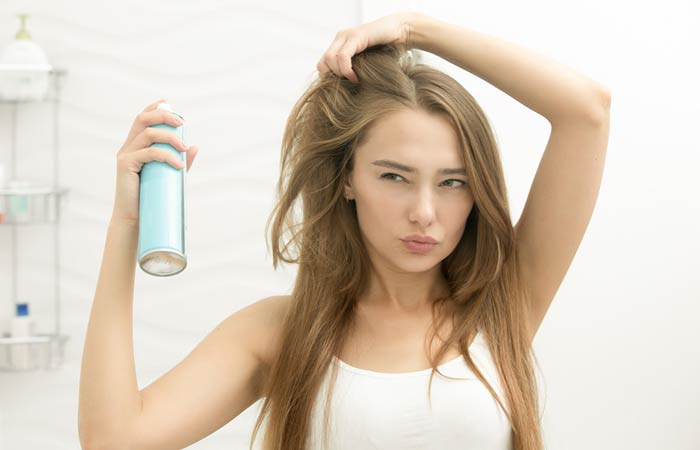Dandruff? There Are 5 Types, So You Might Just Be Treating It Wrong!
Dandruff? There Are 5 Types, So You Might Just Be Treating It Wrong!

It starts slowly. Your black clothes are the first to be banished. Then comes the embarrassment. The awkward dance of your hands with your hair – tucking it behind your ears, rolling it up in a bun, spreading it out strategically to conceal those pesky white flakes that lay beneath. Dandruff. And there are several types of dandruff. Read on.

Diagnose Your Dandruff
“Eczema, dryness of scalp, infrequent shampooing and a yeast-like fungus are all common causes of the itchiness and dry flakes that define dandruff. To treat this unfortunate condition, it’s best to identify the type of dandruff that may be getting you down,” explains Dr Gray.
1)Dry-skin related dandruff
 Dandruff caused by dry skin is one of the most common types and occurs mainly in winter, because washing hair with warm water tends to make the scalp dry and flaky. Interestingly, those with drier or curlier hair are more susceptible to this type of dandruff and may experience a feeling of tightness on the scalp. Dry skin dandruff should be treated with moisturising shampoos that hydrate your tresses and scalp. In addition, it’s a good idea to stay away from any chemical treatments such as hair relaxants, perms or dyes. Sufferers are also advised to take in more moisture from the inside by drinking the recommended eight glasses of water per day. Regular brushing and head massages also stimulate circulation, bringing blood, nutrients and much needed oxygen to the scalp.
Dandruff caused by dry skin is one of the most common types and occurs mainly in winter, because washing hair with warm water tends to make the scalp dry and flaky. Interestingly, those with drier or curlier hair are more susceptible to this type of dandruff and may experience a feeling of tightness on the scalp. Dry skin dandruff should be treated with moisturising shampoos that hydrate your tresses and scalp. In addition, it’s a good idea to stay away from any chemical treatments such as hair relaxants, perms or dyes. Sufferers are also advised to take in more moisture from the inside by drinking the recommended eight glasses of water per day. Regular brushing and head massages also stimulate circulation, bringing blood, nutrients and much needed oxygen to the scalp.
2)Oil-related dandruff
 The accumulation of sebum oil secreted by the scalp is another common cause. Improper or irregular shampooing habits lead to this type because if the hair and scalp are unclean, the sebum or skin oil combines with dead skin cells and dirt to form itchy flakes. Stress might also be the cause of this kind of dandruff, because when we’re experiencing anxiety, we tend to secrete an oily sebum on the scalp that may exacerbate the condition.
The accumulation of sebum oil secreted by the scalp is another common cause. Improper or irregular shampooing habits lead to this type because if the hair and scalp are unclean, the sebum or skin oil combines with dead skin cells and dirt to form itchy flakes. Stress might also be the cause of this kind of dandruff, because when we’re experiencing anxiety, we tend to secrete an oily sebum on the scalp that may exacerbate the condition.
3)Fungal dandruff
 The fungus malassezia is naturally found on the skin and scalp. Normally, this fungus manages limited growth but excessive oil on the scalp serves as a food source, unfortunately allowing it to grow rapidly. Malassezia produces oleic acid as a metabolic byproduct and it is this, in turn, that produces an increased turnover of skin cells causing unwanted white flakes.
The fungus malassezia is naturally found on the skin and scalp. Normally, this fungus manages limited growth but excessive oil on the scalp serves as a food source, unfortunately allowing it to grow rapidly. Malassezia produces oleic acid as a metabolic byproduct and it is this, in turn, that produces an increased turnover of skin cells causing unwanted white flakes.
4)Disease-related dandruff
 More serious causes of this condition can include scalp-related infections. Psoriasis, by way of example, causes excessive production of skin cells on the scalp, which leads to scaly skin. These are shed, and combine with dirt and sebum oil to cause dandruff. Similarly, eczema can also cause the skin on the scalp to become itchy and flaky. Seborheicc dermatitis is a more serious type of dandruff that features symptoms like a red and irritated scalp, sores and an itching scalp. While this condition can affect the entire scalp, it is more prevalent at the back of the head and neck. Seek medical attention if you suspect this condition, which may also occur on the ears and even the face.
More serious causes of this condition can include scalp-related infections. Psoriasis, by way of example, causes excessive production of skin cells on the scalp, which leads to scaly skin. These are shed, and combine with dirt and sebum oil to cause dandruff. Similarly, eczema can also cause the skin on the scalp to become itchy and flaky. Seborheicc dermatitis is a more serious type of dandruff that features symptoms like a red and irritated scalp, sores and an itching scalp. While this condition can affect the entire scalp, it is more prevalent at the back of the head and neck. Seek medical attention if you suspect this condition, which may also occur on the ears and even the face.
Comments